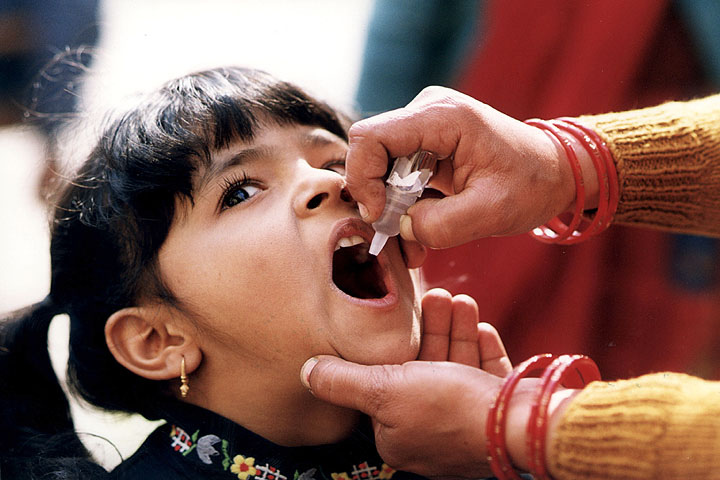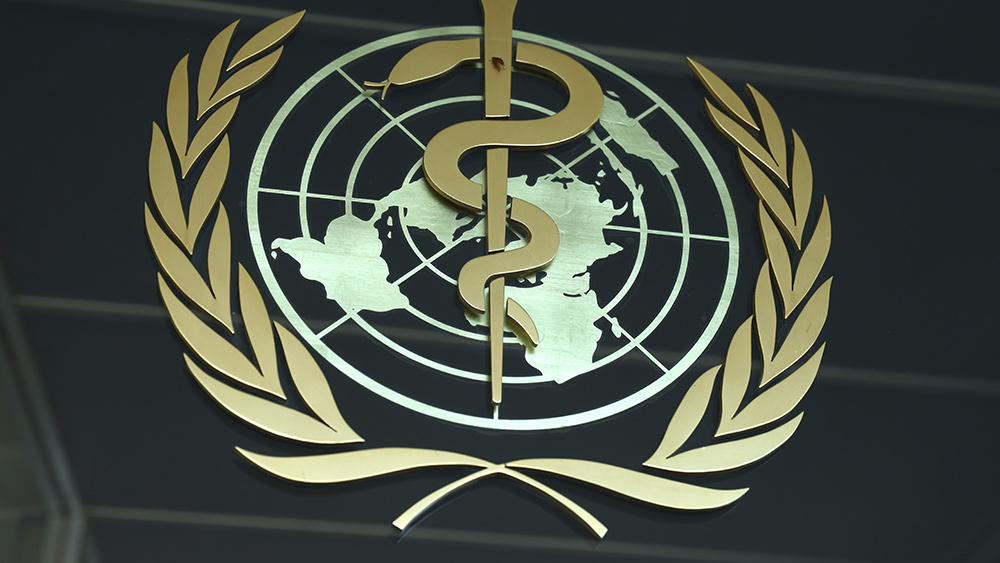
(Article by Patricia Harrity republished from Expose-News.com)
What is Polio and Was it Really Eradicated?
by Simon Lee, Science Officer, Anew UK
“Historical polio mortality trends are not representative of historical infectious disease mortality trends. When the other diseases were at their worst in the 19th century, polio was still relatively unknown in many areas. As the mortality for the other diseases plummeted in the first half of the 20th century, polio mortality climbed. Polio mortality had the opposite trend of most the other diseases and the opposite trend of infectious disease mortality in general.” Jordan Henderson
The Terror Campaign
In the mid-20th century, polio struck terror in people’s minds because it didn’t just make people sick (especially young people), it sometimes left them crippled too. Pictures of people in iron lungs and children wearing leg braces played a prominent role in the polio terror campaign.
With the major causes of death and disability ( TB, cholera, diphtheria, and malaria) declining or at historic lows by the 1940s that generation was arguably the healthiest population in history but polio was still a persistent “unexplained horror”.
Terror propaganda organisations such as the CDC, the WHO, the European CDC et al tell us that polio is caused by a “virus” that is “very contagious” or “highly contagious” which can “infect 90-100% of household contacts”.
We are encouraged to be particularly fearful of children because according to the WHO “as long as a single child remains infected, children in all countries are at risk of contracting polio.”
Not only should we be terrified of children, and people with symptoms of a cold or flu, but we should also shun those with no symptoms at all because “an infected person can spread the virus to others immediately before and up to 2 weeks after symptoms appear.” according to the CDC.
The CDC, inform us that the vast majority of Polio cases are asymptomatic. They claim that large numbers of people are potentially infecting others unknowingly:
“It’s estimated that 95 to 99 percent of people who contract poliovirus are asymptomatic. This is known as subclinical polio. Even without symptoms, people infected with poliovirus can still spread the virus and cause infection in others.”

Dodgy Diagnoses and the Relabelling of Symptoms
In reality, polio is just a collection of common symptoms that have been given a scary label. The symptoms include sore throat, fever, tiredness, nausea, headache, and stomach pain. These symptoms are the same as flu, and virtually every other disease, except that there is also a small chance of paralysis. When paralysis develops from flu-like symptoms the disease is considered to be polio.
Strangely, it is claimed that the most accurate way to diagnose polio is using stool samples rather than blood or cerebrospinal fluid (CSF). Surely this “virus” must be present in the CSF of people afflicted with this paralytic disease of the central nervous system?
In 1954 the criteria for diagnosing polio was changed in order to make it a much rarer diagnosis. Prior to 1954, paralytic symptoms lasting only 24 hours were enough to secure a polio diagnosis without any residual paralysis or laboratory confirmation. After 1954, residual paralysis was determined 10 to 20 days and again 50 to 70 days after disease onset. This change in definition meant that since 1955 paralytic poliomyelitis was defined with a longer-lasting paralysis thereby making most cases of polio miraculously disappear.
In addition to raising the bar to secure a polio diagnosis, conditions with the exact same symptoms were just given new names, for example, acute flaccid myelitis. According to the Mayo Clinic:
“Acute flaccid myelitis (AFM) is a rare but serious condition that affects the spinal cord. It can cause sudden weakness in the arms or legs, loss of muscle tone, and loss of reflexes. The condition mainly affects young children. Most children have a mild respiratory illness or fever caused by a viral infection about one to four weeks before developing symptoms of acute flaccid myelitis.”
Acute flaccid paralysis is another term used to describe the disease formerly known as Polio:
“AFM actually is a newly coined term for a subset of cases of the long-recognized syndrome of acute flaccid paralysis (AFP), in which cord myelitis is documented, typically by magnetic resonance imaging (MRI) visualization. The term AFP subsumes additional causes of flaccid paralysis such as trauma, tumors, and immunopathologic disorders.” Source
The disease formerly known as polio was also reclassified as aseptic meningitis and Guillain-Barre Syndrome in order to make it magically disappear.
Polio is now only considered if all other possible causes of acute flaccid paralysis have been ruled out.
Polio was not conquered, the symptoms of the disease were just reclassified under new names and the criteria for diagnosis changed in order to make it a much rarer diagnosis.
The disease formerly known as Polio still exists today although it is not as prevalent as it once was.

Polio is NOT Contagious
“Even five years ago if anyone had suggested that the disease under discussion was an infectious or a contagious one, it would have been looked upon as a joke.“ L. Emmett Holt
Polio is considered to be caused by a “highly contagious virus” that spreads easily from person to person through faeces and droplets from coughs and sneezes.
Is this really true?
Swedish pediatrician Dr Karl-Oskar Medin, who conducted the first scientific studies of a polio outbreak in 1887, concluded that, while polio was an “infectious” disease, it was not a “contagious” disease.
In 1899 a Norwegian researcher called Leegaard was not able to prove a single case of patient-to-patient contagion in a polio outbreak of 54 cases in Norway:
“The only noteworthy observation in this respect was Leegaard’s. He proved that the disease showed a remarkable relation to highways. But to him, also, the precise mode of diffusion of the disease remained obscure. The current view was expressed in the sentence: ” Infantile paralysis is of an infectious, but not of a contagious nature.” As a matter of fact no indisputable instance of contagion could be proved.” Source
An 1893 article titled “Is Acute Poliomyelitis Unusually Prevalent This Season?” appeared in an issue of the widely-read Boston Medical and Surgical Journal. Contrary to expectations for an “infectious and contagious” disease, most of the polio victims came from the suburban and rural areas surrounding Boston, rather than from the city itself:
“It is noteworthy, as against any strongly marked epidemic influence, that the patients did not come to any extent, from any one locality, but from different parts of the large area of the suburbs of Boston.” putnam1893Download
Dr. Charles Caverly, asserted in his book “Infantile Paralysis in Vermont”, that no “infectious” disease had been found that could explain an 1894 outbreak of infantile paralysis, and that he was sure that it was not contagious:
“There was a general absence of infectious disease as an etiologic factor in this epidemic. The element of contagium does not enter into the etiology either. I find but a single instance in which more than one member of a family had the disease, and as it usually occurred in families of more than one child, and as no efforts were made at isolation, it is very certain that it was non-contagious.” infantileparalys00caveDownload
In a 1909 edition of The Boston Medical and Surgical Journal, Dr. Herbert Emerson reinforced Dr. Caverly’s views in his report of the 1908 Massachusetts polio epidemic. He found that, in instances where there was no isolation amongst families with multiple children and numerous instances of close contact between family and friends (totaling at least 244 children with close contact all together), only 2 cases ever developed. He concluded that the disease was “mildly contagious” at best. Source
Dr. Fredrik Batten published a paper titled “The Epidemiology of Poliomyelitis” in 1911 and described the non-contagious nature of poliomyelitis during an epidemic in 1909. He mentioned that there was an absence of “infection” in the hospital. There was no attempt to isolate or disinfect, and at least 70 children came into contact with sick children but no “infections” took place. This led him to believe that the paralytic stage of the disease is not contagious, as there was a complete absence of “infection” even when contact had been intimate.
“The Epidemiology of Acute Poliomyelitis” published in 1908 in the American Journal of Medical Sciences by New York Doctors Luther Emmet Holt and Frederic Bartlett reviewed every polio outbreak reported in the medical literature at the time, totaling 35. They paid special attention to reports of multiple cases in a single family. Out of the 1,400 polio cases they reviewed, only 40 cases of more than one patient in a family were found. They concluded that polio contagiousness was an open question, and if it was contagious, it was only to a very slight degree. Source
In a lecture at the 1926 conference of the American Medical Association, Dr. Lloyd Aycock of the Department of Preventive Medicine and Hygiene at Harvard Medical School spoke about the epidemiology of polio and its distribution. He noted a higher incidence of polio in rural areas, compared to cities, contradicting what would be expected from a contagious disease.
Dr. Aycock also emphasised the lack of evidence for direct contagion among polio patients. aycock1926Download
In 1938, G.O. Barber stated that polio is definitely not highly “infectious” as children in crowded homes who had been sleeping every night in the same bed as the paralyzed child did not become “infected”
In 1951, Dr. Aycock also pointed out that the epidemiologic evidence of direct contact was lacking, estimated at around 5%, showing that the proportion of direct contact cases is minuscule.
Investigating an outbreak of polio in Louisville in 1935, L. L. Lumsden stated that there was no evidence of transmission through personal contact:
“Painstaking efforts were made throughout the studies to obtain all traces of transmission of the disease through personal contact, but it appears that in this outbreak in Louisville evidence of a personal association between the cases of poliomyelitis, suggestive of cause and effect, was no more common than that which might have been found if histories had been taken of personal association between cases of broken bones occurring in the city in the same period.” b2993204x-1Download
In 1938, Lumsden expressed more doubts about the contagion hypothesis and stated that the evidence pointed to the opposite conclusion:
“The general and usual epidemiological features of the disease all appear opposed to the hypothesis that poliomyelitis is a contagious disease spread among human beings by nose-to-nose or any other direct personal contact. What is the reason for such regional distribution of the disease we call poliomyelitis? We simply do not know. None of the usual hypotheses of spread—the contagion or other—appear to apply to it to a completely satisfactory degree.” lumsden1938Download
In the 1938 paper “Acute Anterior Poliomyelitis”, G.O. Barber noted the absence of polio transmission in children who often slept next to siblings in the paralytic stage for several days, going so far as to say that polio was definitely not highly “infectious”. barber1938Download
In fact, Dr. Archibald Hoyne, a professor of pediatrics at the Chicago Medical School and an attending physician at two Chicago hospitals noted that in the 35 years he worked in “infectious” disease wards of Chicago hospitals, no doctor, intern, nurse, staff member, or hospitalized patient was ever “infected” with polio.
Dr Hoyne wondered what good polio research was doing since “very little information of practical value has been added to our knowledge of poliomyelitis during the past forty years” and lamented that “the more we learn about poliomyelitis, the less we know.”
Dr Hoyne listed a summary of the problems with polio despite extensive research into the problem:
“A SUMMARY OF PROBLEMS
Still unknown etiologic agent.
Warm weather prevalence, unusual for a communicable disease.
Undetermined manner of transmission.
Susceptibility in the exceptionally well-nourished.
Variability of symptoms.
Lack of a practicable laboratory diagnostic test.
Diagnostic difficulties added by the “new virus.”
Reliable measures for prevention.
Dependable methods for treatment.
Question whether isolation of poliomyelitis patients is an effective means of controlling the disease.” hoyne1951Download
Edward Shaw and Hulda Thelander of the San Francisco Children’s Hospital were also exasperated with the situation:
“Every aspect of poliomyelitis has been subjected to intensive study during the last two or three decades, in spite of which the clinician has not been presented with any inescapably sound doctrine regarding its epidemiology and transmission, its precise pathogenesis, or the details of diagnosis and treatment…The epidemiology of the disease remains obscure. There has been a tendency to depart from an early theory that the disease spreads by means of direct contact.”
In 1951, Dr. Ralph R. Scobey, professor of clinical pediatrics and president of the Poliomyelitis Research Institute Syracuse, questioned the idea of polio contagion. Dr. Scobey pointed out that every attempt to prove contagion had failed and that knowledge about polio was based almost entirely on animal experiments rather than clinical investigations.
In 1952, Dr. Scobey stated that conclusive evidence of contagiousness was not established during any polio epidemics, including in 1949 during the largest epidemic of poliomyelitis in recorded history. He noted that it had proven impossible not only to show polio contagiousness in humans but in animals as well.
Further doubts were expressed in Dr. Scobey’s 1952 article “The poison cause of poliomyelitis and obstructions to its investigation”:
“In addition to the failure to prove contagiousness of human poliomyelitis, it has likewise been impossible to prove contagiousness of poliomyelitis in experimental animals.”
https://archive.org/details/sim_archives-of-pediatrics_1951-05_68_5/page/220/mode/2up
These early studies on polio outbreaks did nothing to prove the idea that polio was a contagious viral disease. Its characterisation as an “infectious” disease was not based on solid evidence.
Nurses and mothers caring for affected children never came down with the disease, and there was no evidence of any polio cases contracted in hospital wards with children suffering from the disease.
Photographs of medical and nursing staff taken during this period show that they did not wear gloves or masks and so were clearly not fearful of contracting polio from the patients they were looking after.
Much of the evidence for polio in humans was derived from cruel animal experiments that were not relevant to humans.
Monkey Business
“In addition to the failure to prove contagiousness of human poliomyelitis, it has likewise been impossible to prove contagiousness of poliomyelitis in experimental animals.”
Dr Ralph Scobey
In 1948, Van Rooyen and Rhodes stated that our understanding of polio was derived from experiments on monkeys rather than being based on observable facts from humans.
In 1918, Milton Rosenau, professor of preventive medicine and hygiene at Harvard, stated that the only way to create experimental polio was by paralyzing monkeys in the lab via injections directly into the brain or spinal cord. But even after becoming paralyzed, the monkeys are not contagious and monkeys do not develop polio spontaneously, even when kept in close contact with one another.
In a 1941 paper, Dr. John Toomey noted that the experimental mode of transmission in animals was not relevant to humans and that monkeys were not contagious to other monkeys no matter how intimately exposed they were.
In 1908–1909, German researchers Landsteiner and Popper claimed to have isolated polio “virus” and used it to cause polio in monkeys. They injected a pulverized soup of diseased brain tissue into the brains of two monkeys. One died, and the other became ill.
“It must be admitted that our present views of the pathogenesis of human poliomyelitis result very largely from recent experimental work carried out on monkeys, rather than on facts observed from the patient himself.” Dr Ralph Scobey
Pesticide Poisoning
In the mid-1950s, Dr Morton S. Biskind testified before the US Congress telling the politicians what they did not want to hear. He told them that polio wasn’t caused by a virus but rather central nervous system (CNS) poisons, and the main CNS poison at that time was a pesticide called dichlorodiphenyltrichloroethane (DDT).
DDT was used during World War II to control insects that were presumed to cause malaria and typhus among troops and civilians. The inventor of DDT, Paul Herman Müller, was awarded the Nobel Prize in Physiology or Medicine in 1948 “for his discovery of the high efficiency of DDT as a contact poison against several anthropods.”
By October 1945, DDT was available for sale to the public in the US and was heavily promoted as an agricultural and household pesticide.
Photographs from the era show housewives filling their houses with DDT fog, dairy farmers dusting cows in their cowsheds and even spraying it into the milk, crop dusters dumping DDT on fields and forests, and children on beaches covered in the pesticide. An attachment for lawn mowers could spread DDT over lawns, and trucks sprayed DDT on city streets, where children played.
DDT replaced lead arsenate which was introduced in 1898 and before that plain arsenic was used as a pesticide. These are all known human CNS poisons.
Experts who had studied the pharmacology of DDT and found it dangerous for all forms of life warned against its general use by the public as an insecticide. By 1945 it was known that DDT is stored in the body fat of mammals and appears in the milk. This did nothing to stop the intensive campaign of mass poisoning that followed.
Government officials relied solely on the prestige of government authority and sheer numbers of experts to bolster their position that DDT was safe. They provided no evidence to counteract the evidence clearly showing that DDT was not safe.
It was shown that young children exposed to DDT developed a limp that lasted from 2 or 3 days to a week or more. It was shown that DDT can cause degeneration of the anterior horn cells of the spinal cord in experimental animals.
The neurotoxic effects of DDT are well known and include the usual Polio/flu symptoms of dizziness, headache, fatigue, and vomiting along with both paralysis and death:
“Neurotoxic effects of DDT include tremors, convulsion, paralysis, decreased central nervous system lipid, phospholipid and cholesterol content. DDT exposure early in life causes decreased growth, mortality, decreased levels of brain muscarinic acetylcholine receptors, increased spontaneous motor activity in adulthood and decreased learning.”
https://www.ewg.org/sites/humantoxome/chemicals/chemical.php?chemid=20007
There was a clear, direct, one-to-one relationship between pesticides and polio over a period of thirty years, with pesticides preceding polio incidence.
As the use of DDT in the US declined, so did the incidence of polio. Vaccinations were introduced at the same time and these were credited for the decline in polio cases.
Polio Vaccine Madness
Both the Salk and Sabin polio vaccines are known to cause the exact same disease that they were supposed to prevent. Polio cases were reclassified when the vaccines were rolled out in order to create the appearance that polio was conquered.
Most people believe that Polio has been eradicated but it is still present in India, Africa, Pakistan, and Afghanistan. The majority of these cases are caused by the vaccine that is supposed to protect against the disease.
“It’s actually crazy because we’re vaccinating now against the vaccine in most parts of the world, not against wild polio, which is confined to Pakistan and Afghanistan.”
Dr Vincent Racaniello (virologist)
It is commonly believed that polio has been completely eradicated by the vaccines. In reality, polio was already declining before the toxic vaccines were introduced.
Even with worldwide vaccination programs, polio has not gone away. Identical symptoms have been given new names most notably acute flaccid paralysis (AFP) and many parents have observed that this condition appears after a vaccination.
In India and Africa, the incidence of acute flaccid paralysis has skyrocketed, which many blame on campaigns to administer experimental polio vaccines to young children.
In a 2018 publication in the International Journal of Environmental Research and Public Health, Indian researchers described the strong correlation between polio vaccines and AFP. They calculated that in India from 2000 to 2017, there were “an additional 491,000 paralyzed children” in excess of “the expected numbers.”
Dr. Suzanne Humphries suggests that “there is strong evidence pointing to the likelihood that experimental polio vaccination is related to the sharp rise in AFP.”
CONCLUSIONS
The symptoms of disease once labelled as polio still exist today under various other names. The only difference between these labels is the assumed cause. However, it is very clear that an “infectious” cause was never proven, and the ability for the disease to transmit from person to person is not supported by the evidence.
The mainstream narrative regarding polio has been challenged by extremely compelling evidence from numerous doctors, scientists, and researchers, who have shown a lack of evidence supporting the contagious nature of polio.
It used to be widely accepted that polio was not a disease that could be spread from person-to-person or even from animal-to-animal under experimental conditions.
Animal experiments have consisted of injecting toxic unpurified soups into the brains of animals which have, unsurprisingly, sometimes resulted in paralysis. However, this paralysis could not be transmitted via contact with other animals. This is not surprising when you consider the fact that no polio “virus” was ever properly purified and isolated and proven to be pathogenic via a natural route of exposure in adherence to the scientific method.
DDT and lead arsenate used at the time polio was highly prevalent cause the exact same symptoms that have been attributed to polio.
The polio story is a fictional tale used to push a toxic vaccine campaign and to cover up the crimes of poisoning by the agrochemical industry. The idea that polio is “highly infectious and contagious” is a myth.
The CDC’s unscientific advice regarding polio is: “To prevent infections in general, persons should stay home if they are ill, wash their hands often with soap and water, avoid close contact (such as touching and shaking hands) with those who are ill, and clean and disinfect frequently touched surfaces.”
Sound familiar?
Read more at: Expose-News.com
Please contact us for more information.























